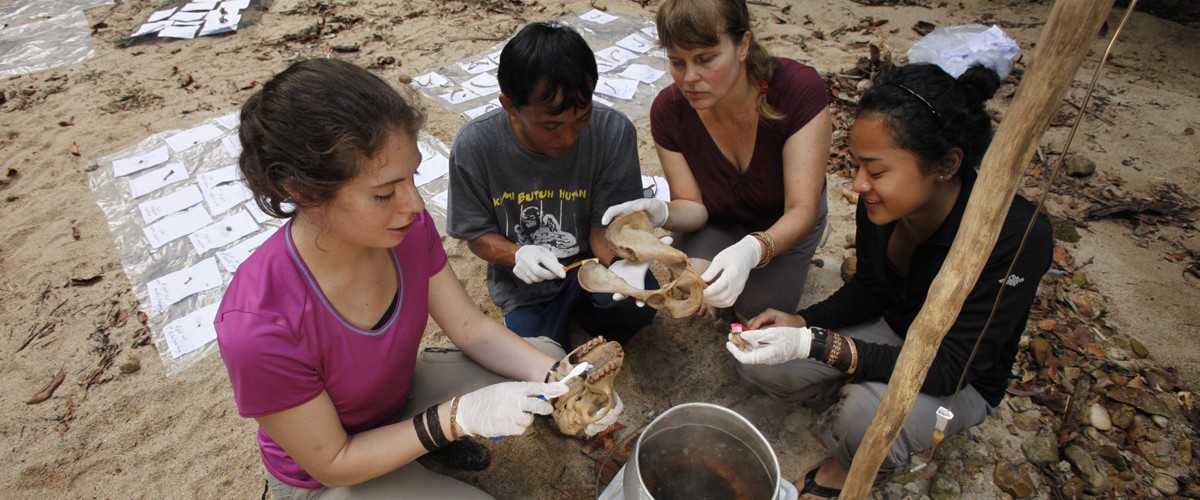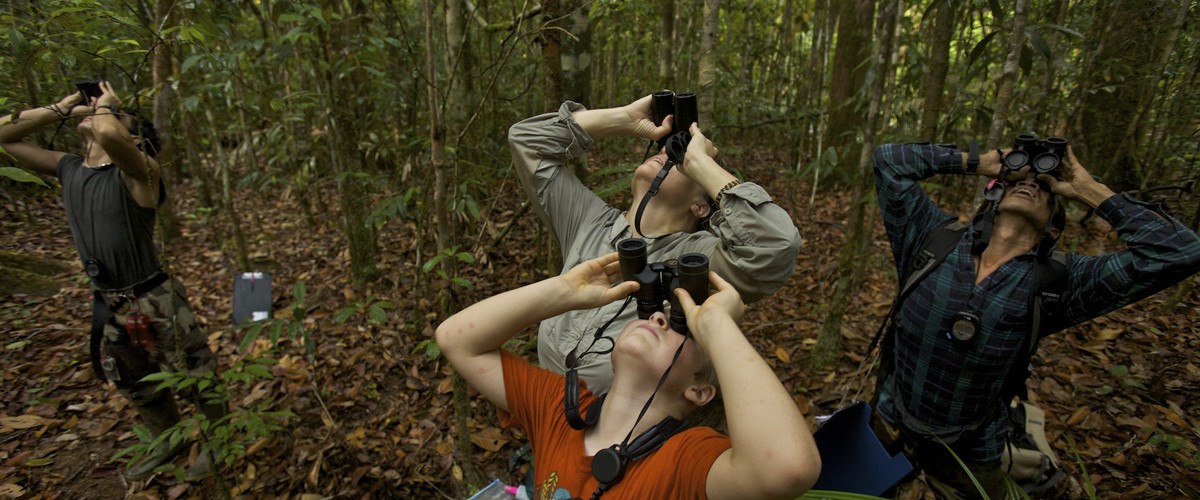I’ve recently arrived at the Cabang Panti Research Station to pursue my dissertation research on orangutan seed dispersal. Seed dispersal is the movement of seeds away from the original
 |
|
 |
Graduate student Andrea Blackburn at the Cabang Panti Research Station. Photo by Alys Granados.
|
plant to a new location. Plants have different strategies for dispersing their seeds, including wind, gravity, water, and animals. Animals act as vectors for seed dispersal in several ways: seeds can catch on the animal’s fur, animals may move seeds when attempting to move other substrates (e.g. a bird building a nest), or animals may eat a fruit, swallow the seeds, and later defecate the seeds in a new location. Animals that consume fruit, such as orangutans, may swallow and defecate many different species of seeds and consequently they shape the forest through seed dispersal.
Orangutans love to eat fruit, and how orangutans eat different fruits is one of my main research questions. Orangutans do not eat all fruits in the same way. Sometimes the orangutan chews the seeds and destroys them, other times the orangutan removes the pulp and spits out the seed, and finally sometimes the orangutan swallows the seed intact and the seed passes through the orangutan unharmed. I am interested in which seeds orangutans destroy, which seeds pass through unharmed, and if the unharmed seeds germinate and grow into new seedlings.
|
|
|
Rosa eating a fruit and spitting out the seeds below.
|
In order to answer my research questions, I get up very early in the morning so that I can arrive at the orangutan’s nest before they wake up. I then follow the orangutan throughout the day. When the orangutan decides to eat in a fruit tree, I use my binoculars to carefully watch how the orangutan eats the fruit. During the day, when the orangutan defecates I help collect the feces for analysis in the lab. I am interested in knowing which types of seeds, and how many, are intact in the feces. I then collect the seeds from the feces and try to grow them in a controlled environment. Right now in the forest a lot more trees than normal are fruiting for a few months, which is called a mini-mast, so it’s a very exciting time to be studying how orangutans interact with fruit!
|
|
|
A juvenile bearded pig (Sus barbatus) caught on a camera trap consuming Willughbeia sp. seeds discarded by a flanged male orangutan.
|












